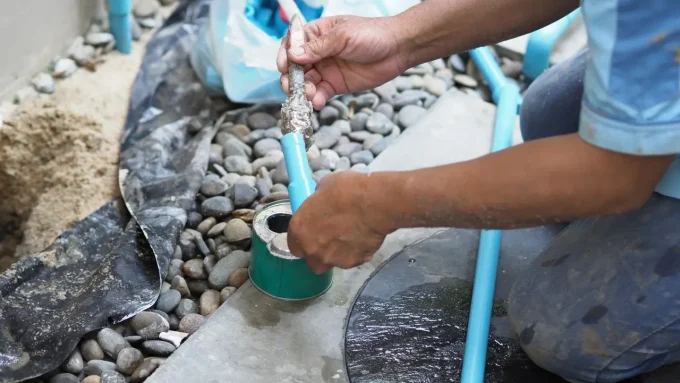It may be something you’ve never contemplated; it may be something that you’ve thought of, but never pictured yourself in the situation. Either way, learning how to process your urine and make it safe(r) for drinking could one day save your life.
The general idea might give you pause, but a urine filter works on the same principles as other filters, and are great for the environment and recycling water. Once you’ve gotten over the initial reluctance of “drinking piss water”, you’ll find that it’s something worth knowing for extreme survival situations.
Here is everything you need to know about urine filtration, from how it actually works, to the risks no one warns you about, to the real tools and tricks that work (and the myths you can safely forget).
Is it Safe?
First, let’s get the facts straight. While some people around the world have tried urine drinking for supposed health or spiritual reasons, most survival experts strongly recommend avoiding it unless you have no other option.
While urine is indeed mostly water, it also contains waste byproducts your body worked hard to get rid of in the first place.
While it leaves the body sterile if you’re healthy, it quickly becomes a breeding ground for bacteria. Worse, if you’re already dehydrated, your urine is more concentrated – meaning more salt, urea, and toxins, and less water.
So there are actual health risks – big ones too, like:
- Increasing salt and toxin levels in your body, accelerating dehydration.
- Overworking your kidneys (especially if you already have kidney issues).
- Exposing you to bacteria if you store urine or drink someone else’s.
- Triggering or worsening infections.
See also: How to Survive in the Wild with Nothing: Extreme Survival..
So, if you’re in an extreme situations, you should only drink your own urine. Not just because it’s slightly less disgusting than drinking someone else’s, but because illnesses or infections can be passed through the liquid.
When Is It Actually Safe?
In desperate, last-resort survival scenarios (think stranded in the desert with no water and no hope of rescue), drinking your own fresh urine might help you stretch the time before dehydration becomes life-threatening. But don’t rely on it to save you for long.
If you are very thirsty, technically, drinking urine will not rehydrate you (because of the high salt content). But one of the great benefits is that it will allay the worst ravages of thirst and let you function for longer in a low-water environment.
The Truth About “Health Benefits” and Myths
There’s no solid scientific evidence that drinking urine offers health benefits. Claims that “healthy” urine can make someone else healthier are not just false, they’re potentially dangerous. Urine therapy is sometimes promoted online, but medical professionals and organizations agree: avoid it if you have any other water source (read one study here).
Who Should Avoid It, No Matter What?
- Children and the elderly.
- Anyone with kidney, bladder, or urinary tract conditions/infections.
- Pregnant women.
- Those with compromised immune systems.
- People taking medications (some drugs concentrate in urine).
Also read: How to Clean a Camelbak/Hydration Pack
Survival Context
If you’re reading this for preparedness, remember: only drink urine when you have no other choice and as a short-term stopgap. Even then, filtered or distilled urine is always safer than drinking it straight.
Prioritize:
- Clean, clear water or any non-alcoholic beverage from a clean/trustworthy source.
- Rainwater.
- Water from plants (if possible).
- Filtered/distilled urine (if absolutely necessary).
- Unfiltered urine (as a final, short term option, but expect discomfort and possible health issues)
Three Ways to Handle Urine for Survival
1. Drinking It Neat (Straight)
If you reach the point where you must drink urine directly, do it sooner rather than later. The less concentrated your urine, the less stress on your kidneys, and the fewer toxins you reintroduce.
If you’re down to half a bottle of water, mixing it with fresh urine may help you stay hydrated a bit longer. Just know that the benefit is limited.
Store urine only in clean containers and keep it away from heat and sunlight – bacteria multiply fast in warm conditions. In desperate outdoor situations, some survivalists have used clothing as makeshift filters or reservoirs (like peeing into a t-shirt and sucking moisture slowly), but this is far from ideal. Your hands aren’t a good cup either; you’ll lose most of the liquid before you even get a taste.
Warning: The taste and smell will be strong, especially as dehydration worsens. You can try pinching your nose or swishing with any remaining clean water after, but it’s never pleasant.
Also read: Best Odor Proof Bags for Backpacking
2. Emergency Outdoor Filtering: The Solar Still

Whenever possible, purify urine before drinking it. One of the most reliable ways in the wild is the solar still – a technique that turns urine into distilled, drinkable water.
How to Make a Solar Still
You’ll need:
- A clear plastic sheet (a trash bag works in a pinch)
- A container (cup, bottle, bowl)
- Rocks or heavy objects
- A shovel or your hands
Steps:
- Find a sunny spot with little wind.
- Dig a pit about 50cm deep and twice as wide as your container.
- Place your container at the bottom, right in the center.
- Pour urine around (not into!) the pit, close to the edges but not so it spills into your collection cup.
- Lay the plastic sheet over the pit, securing the edges with rocks or dirt.
- Place a small rock in the center of the plastic, directly above your container, so it forms a dip.
- As the sun heats the urine, it evaporates, condenses on the plastic, and drips down into the container.
- Wait a few hours. In hot sun, you might collect a cup (200–500ml) in a full day. In cooler weather, expect less.
Tip: The water collected will be almost pure – no salts, toxins, or pathogens, and none of the original flavor. Of course, there are still risks of contamination, but it’s the better option than drinking it neat.
3. Other Filtering Methods (DIY & Commercial)
There are other ways to filter your urine, especially if you can prepare in advance for them. These should still be used only in extreme situations – fresh water is always preferred!
DIY Filtration Column
Here’s a method that actually works to remove most solids and bacteria:
You’ll need:
- A 1.5m (5ft) long, wide pipe or PVC tube
- A clean bucket
- Washed gravel
- Clean sand
- Activated charcoal (not BBQ charcoal, but proper water filter charcoal, available online, like the one here – affiliate link)
- Muslin cloth
- Elastic bands or cord
Assembly:
- Stuff the pipe: first gravel (bottom third), then sand (middle), then finely ground charcoal (top third).
- Secure one end with muslin cloth held tightly by elastic.
- Set the pipe over the bucket (so the filtered water drips down).
- Pour urine in slowly from the top.
- Water will filter down and collect in the bucket – clearer and safer, but still not perfect.
Maintenance:
- Replace the charcoal weekly (it gets saturated and loses effectiveness).
- Clean the sand and gravel regularly to prevent mold or bacteria buildup.
Note: This method removes most particulates and some bacteria, but not all dissolved salts and toxins. Add mineral supplements to the resulting liquid for better results.
Commercial Urine Filters: What Works (And What Doesn’t)
Most camping water filters (like LifeStraw, Sawyer, or basic carbon filters) do not make urine safely drinkable. The only proven field options use forward osmosis or are specifically rated for urine. These are expensive and not widely available, but for serious preparedness, they’re worth researching.
Always read the manufacturer’s specs: unless it says “filters urine,” don’t trust it.
Even water is not always safe to drink, as you probably know. You can make it drinkable though using one of my recommended Water Purification Tablets.
Real-Life Scenarios and Famous Cases
Survival stories sometimes highlight urine drinking, but rarely as a planned strategy. Even TV survivalists like Bear Grylls use it for shock value rather than practical advice. In real rescue situations, experts recommend rationing sweat (staying cool and resting) over drinking urine.
Bottom line
Urine filtration isn’t glamorous, but it’s a skill that could tip the scales between life and death. Know the risks, master the safest techniques, and treat every drop of water like it’s worth its weight in gold, because when you’re truly thirsty, it is.
For tips on how to make your own water filter to survive, check out our article on this topic.
Do you have any tips or experiences with the use of a urine filter? Please share your stories with us in the comments section below.

Daniel is a gear freak when it comes to hiking, climbing and camping. He went to REI Outdoor School to meet new people and learn best practices. Don’t even try to argue with him about the latest backpack or ice axe, he tried most of them. Daniel’s dream is to climb Mount Everest.

To be completely honest, I can’t see myself drinking my own urine, but it is still nice to know the details you mentioned here just in case of an emergency or apocalypse because you’ll never know. This article is really interesting especially when you discussed the emergency filter so keep up the good work.
We couldn’t agree more. Nobody wants to drink their own urine, so it is definitely a last resort. Survival isn’t always glamorous!
Wow! This is actually cool. I never knew that you can recycle urine and make it potable water. I do not plan to this anytime soon though I still find it amazing. This will be important during emergency situations or when there is no clean water to drink. Thank you for this!
This is definitely a last resort when it comes to staying hydrated. We don’t recommend it unless you are in a dire situation. Thank you for your comment!